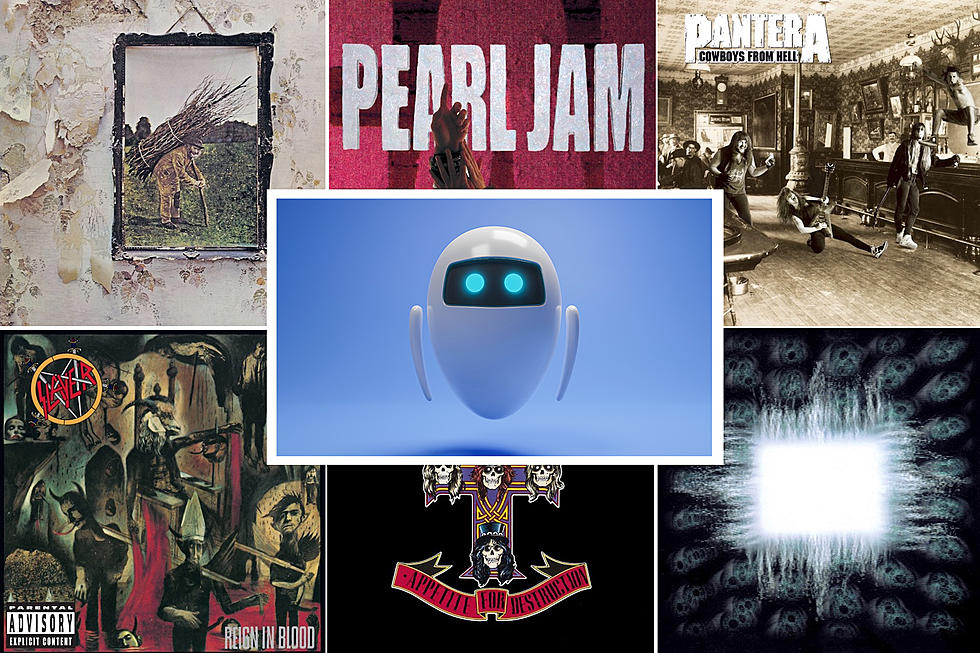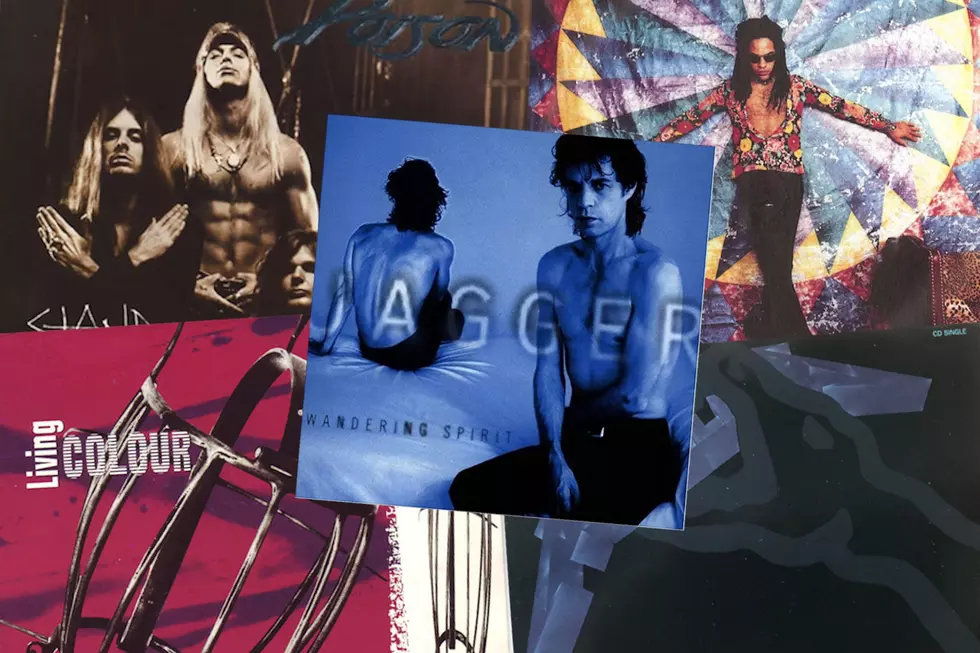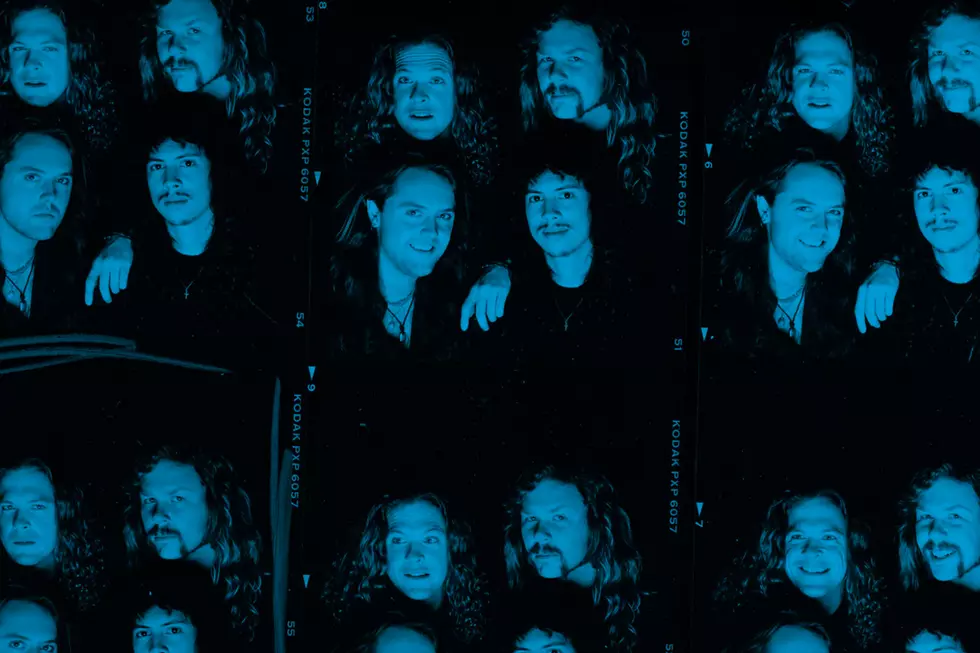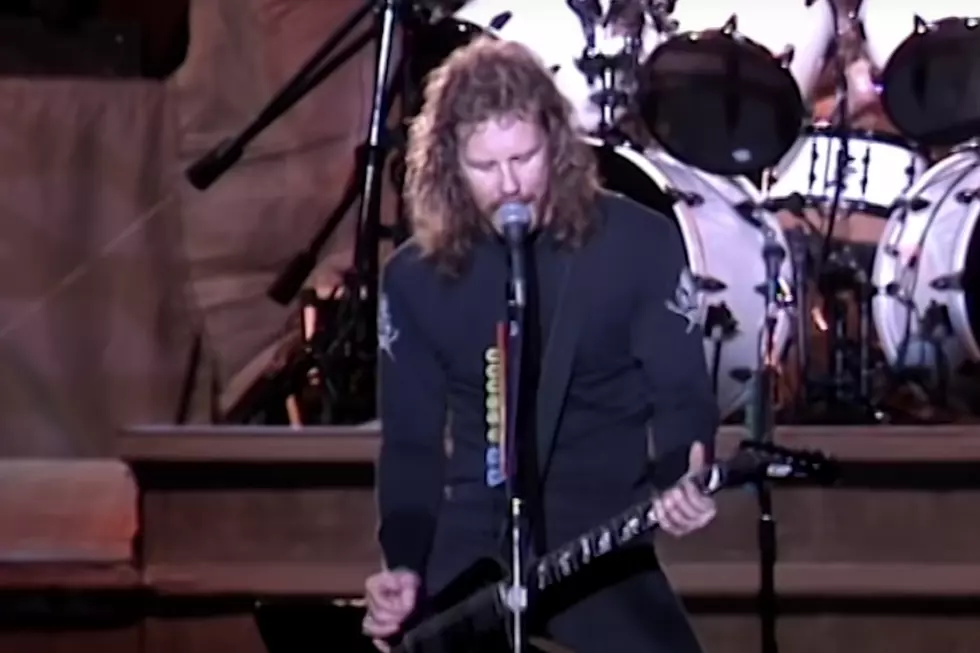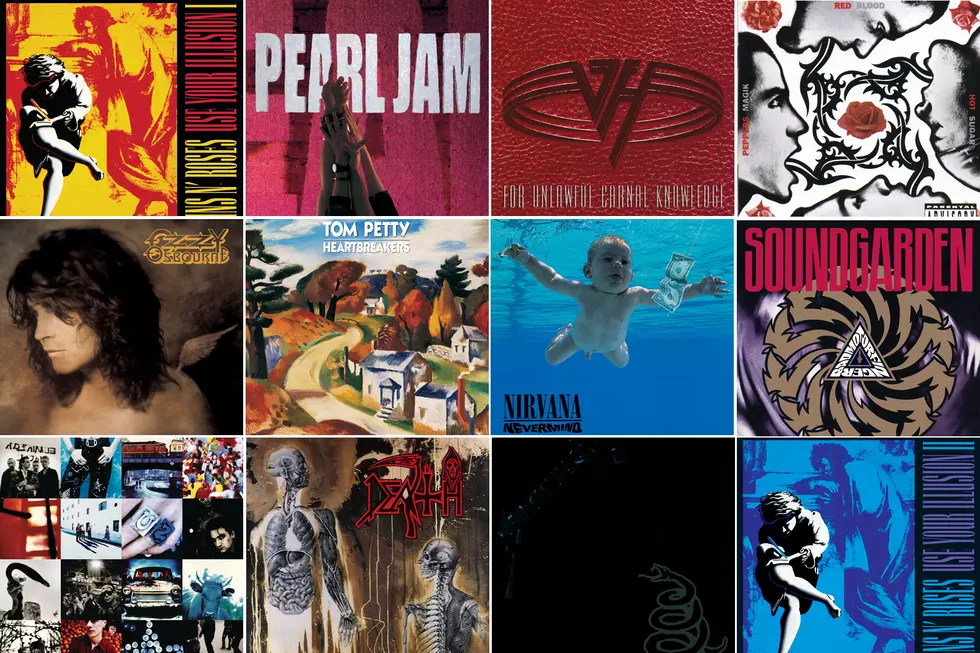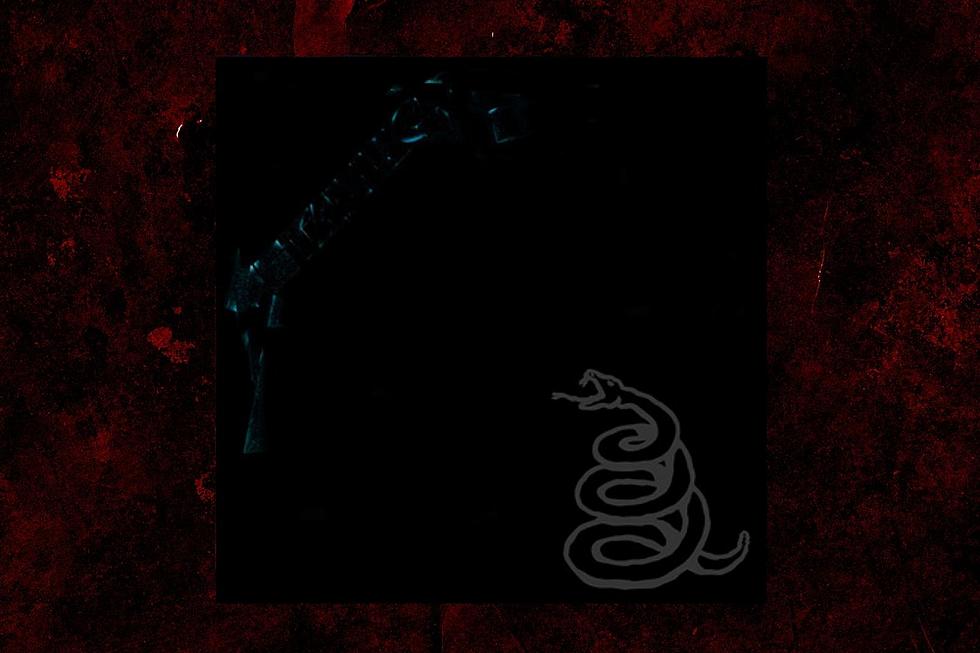
Metallica, ‘Metallica’ (The Black Album) – Album Overview
With 1991‘s self-titled release, also known as the "Black Album," Metallica went from being one of the most popular and successful metal bands to being one of the most popular and successful bands, period.
It launched their career into the stratosphere.
After the long and complex songs of ...And Justice for All, the band streamlined and simplified things for Metallica. There were 12 songs instead of nine, and the "Black Album" actually clocked in at four minutes shorter.
The music was heavy with elements of thrash, but also melodic and even radio-friendly. Part of that was the influence of new producer Bob Rock.
The process wasn’t easy with the band and Rock butting heads as they adjusted to each other’s style. The conflict is evident in the 1992 DVD A Year and a Half In the Life of Metallica, a documentary that chronicles the making of Metallica and the subsequent tour. However, the Rock/Metallica partnership was an effective one, and they would work together for the next few albums.
The more commercial nature of the songs on Metallica, especially the inclusion of a couple of ballads, caused more cries of "selling out" from those who wanted the band to keep to the style of their early albums. It didn’t phase Metallica, who have always experimented with their sound, weathering considerable criticism for it—St. Anger or Lulu, anyone?
Watch Metallica Perform "Enter Sandman" Live in Copenhagen
Metallica was released Aug. 12, 1991, and debuted at No. 1 on the Billboard album chart, and also topped the charts in many other countries across the globe. Six singles would be released, stretching into 1993. The "Black Album" is Metallica’s best-selling album, going a mind-boggling 15 times platinum (over 15 million copies sold) in the U.S., and 30 million worldwide. It also won the 1992 Grammy for Best Metal Performance.
Metallica Track By Track
"Enter Sandman"
The opening track has become Metallica’s most popular song, and was their highest-charting single (No. 16) to that point. It climbed into the top 5 in the U.K. "Enter Sandman" is about a child dealing with nightmares. The child’s voice reciting the prayer "Now I Lay Me Down To Sleep" with James Hetfield in the song is Bob Rock’s son.
"Enter Sandman" has been covered by countless bands, including such luminaries as Judas Priest, Anthrax and Dream Theater. It has also become a staple of sporting events, being played at football games, baseball games, wrestling matches, hockey games and pretty much all other sports. Legendary New York Yankees closer Mariano Rivera also used the song as his entrance music.
"Sad But True"
Released as the album’s fifth single, the lyrics for "Sad But True" were inspired by a 1978 movie called Magic. It starred Anthony Hopkins and Ann Margret, with Hopkins playing a ventriloquist with multiple personality disorder, believing his dummy talks to him. It only made it to No. 98 on the singles chart, but would go on to be sampled by Kid Rock on his 2000 single "American Bad Ass."
"Holier Than Thou"
When the band was deciding on the track listing for Metallica, the song "Holier Than Thou" was reportedly considered to open the album. Of course, that did not happen, and the rest is history. The song has been relegated to moderate obscurity, having only been played live a few times during the "Black Album" tour cycle, and rarely since then.
"The Unforgiven"
"The Unforgiven" is a ballad, but has plenty of heaviness. It was released as a single, peaking at No. 35 in the U.S. The lyrics are about the powerful—people, government, et al.—trying to control the weaker. It even spawned not one, but two sequel songs: "The Unforgiven II" from Reload and "The Unforgiven III" from Death Magnetic.
"Wherever I May Roam"
Metallica expanded their musical repertoire for this song, using instruments such as the sitar and 12-string bass guitar. "Wherever I May Roam" was also released as a single, but only climbed to No. 82 on the Billboard singles chart. The song is about being on the road and leaving loved ones behind, describing themselves as "Roamer, wanderer, nomad, vagabond."
"Don’t Tread on Me"
The title of "Don’t Tread on Me" comes from the Gadsen flag. It was hanging in the studio while the band was recording the album, and the snake from the flag appears on the cover of Metallica. The flag was flown during the Revolutionary War by Navy ships battling British ships. It’s a patriotic song that includes references to Patrick Henry’s famous quote "Give me liberty or give me death." Lars Ulrich’s drums give the song a military march vibe. Not one of the band’s favorite songs, "Don’t Tread On Me" wasn’t played live until 2012.
"Through the Never"
Although Metallica drew criticism for moving away from their thrash roots, "Through the Never" is probably the thrashiest song on the "Black Album." The lyrics are about the never-ending quest for knowledge and answers.
"Nothing Else Matters"
Not just a ballad, but a romantic love song ballad, "Nothing Else Matters" drew the biggest criticism from die-hard thrashers. However, the general public loved it. It did well on the Billboard singles chart and made it to No. 11 on the Mainstream Rock chart. Hetfield wrote the song for his girlfriend and he played the solo as well. That makes "Nothing Else Matters" one of two songs—the other was "(Anesthesia) Pulling Teeth" from Kill ‘Em All—that Kirk Hammett does not play on.
"Of Wolf and
Werewolves and vampires are hugely popular now and have had their fans for a long time. "Of Wolf and Man" is based on the 1981 werewolf movie The Wolfen. The lyrics can also be interpreted as talking about the transformation that happens to Hetfield when he drinks.
"The God That Failed"
Hetfield was raised in the Christian Science religion, and his mother died of cancer when he was a teenager because she refused medical treatment, relying on faith to heal her. The lyrics to "The God That Failed" are his reaction to the circumstances of her death and the overall theme of faith.
"My Friend of Misery"
On Metallica’s prior album ...And Justice For All, Jason Newsted’s bass is almost inaudible. Bob Rock changed that, beefing it up considerably on Metallica. However, Newsted did not contribute a lot to the writing process of the album, and "My Friend of Misery" is the only track where he receives a songwriting credit. He actually wrote the riff before he joined the band. He hoped the song would be an instrumental, but unlike their first four albums, there would be no instrumental on the "Black Album." The song was not played live in its entirety until 2012.
"The Struggle Within"
With lyrics about a person wrestling with a self-defeating personality, "The Struggle Within" is another song that got lost in the shuffle over the years. It was also never played live until 2012. It’s a solid, but not spectacular album closer.
Watch Metallica Perform "The Struggle Within" Live in Louisville
'The Metallica Blacklist': 10 Best Metallica Cover Songs on 'Black Album' Tribute
Metallica: A Photo Timeline of Their Remarkable Career
More From Ultimate Metallica
